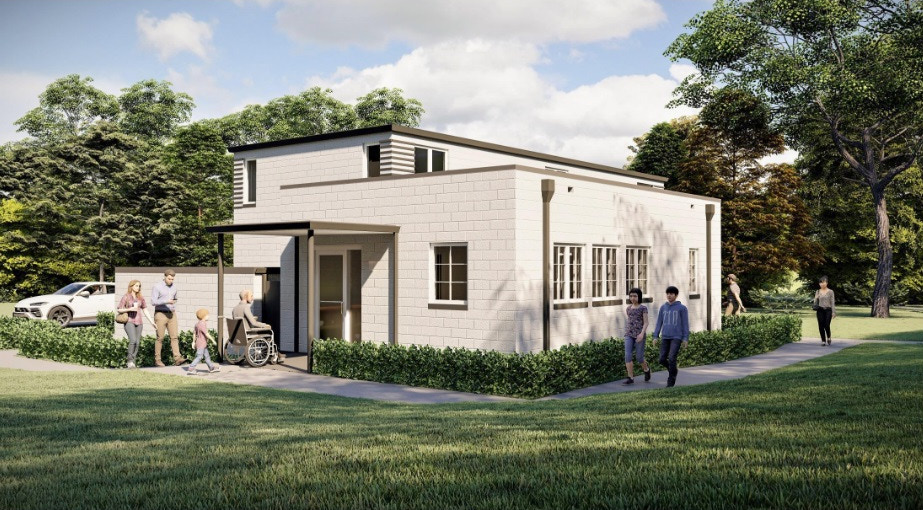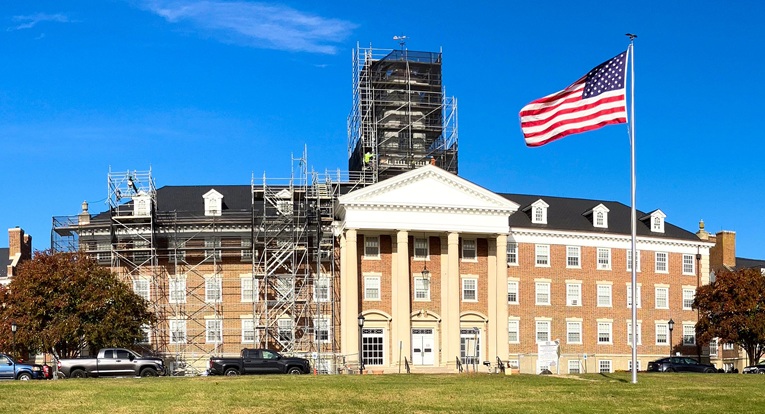The Greenbelt Museum will expand to colocate all visitor programs and museum operations by creating a new Education and Visitor Center at the museum, with work expected to begin within the next 18 months. Museum staff hope to open the facility by Greenbelt’s 90th anniversary in 2027. Museum Director Megan Searing Young spoke about the museum’s plan for renovations at a June 12 event hosted by the Greenbelt Rotary Club.
Why Renovate?
The Museum house occupies a 1937 block Greenbelt Homes, Inc. (GHI) home at 10-B Crescent Road, restored to its 1937 to 1952 appearance, whose 836-square-foot size limits how many people can visit at one time. Young said it’s challenging not having enough space to help people learn about the house, the museum’s most important teaching tool. Staff manage by holding programs outside and at the Community Center. Difficulties include 10-B’s 1937 second-floor bathroom requiring that mobility-impaired visitors use Community Center or Library bathrooms and leaving visitors unsure whether to go to the Community Center or 10-B.
The redesign will create an education and visitor center next door at 10-A Crescent Road, which the city purchased in 2016. The 10-A house will be renovated and its addition replaced. There will be a first-floor accessible entrance, orientation and exhibition room, hands-on learning lab and accessible restroom. The museum office, archives and storage will be upstairs. Exterior work will remove 10-A’s siding and modify its rooflines to match its exterior to 10-B’s 1937 block walls and roof. The 10-B historic house will not change except for a new HVAC system.
Consolidating all museum activity and moving staff from the Community Center will enable the Museum to open at least two to three days more per week. It is currently open Sundays from 1 to 5 p.m.
New Uses
The Museum encourages careful touching of its collections, including summer camp programs for children with dressing up in period clothing and doing laundry by hand. Young said they look forward to using the hands-on learning lab for more such experiences, including teaching cooking using World War II ration points and darning socks to show how residents lived during the Depression and wartime.
They plan to convert 10-A’s porch trash closet to a 24-hour information kiosk that will light up when the door opens.
The facility will also be the city’s visitor and welcome center, with information about citywide businesses and activities. Visitors can learn about Greenbelt history before exploring the city or taking a walking tour.
Museum docent Judy Parker has given tours to visitors she later encounters living in Greenbelt. She said people from out of town often visit the Museum to see what Greenbelt feels like. “It’s a big seller. So many of these families are looking for a different type of community. When they learn that I live here, they ask about my experience and want to know all about it,” Young said. “We can talk about all the things Greenbelt has to offer.”
What’s Finished, What’s Next
Museum staff incorporated community input, developed plans with a designer and architect and obtained GHI approval for the work.
Grants, state bonds and donations have raised $355,000 of the estimated $550,000 cost.
Still to come is completing fundraising, selecting a project manager and general contractor, obtaining permits, removing the existing addition and building a new addition.
Looking Back, Looking Forward
Young described the redesign as important because early Greenbelt provides so many lessons about issues still relevant today, including affordable housing, green space and quality of life. “Greenbelt really is so indicative of so many major issues of the 20th century: the Great Depression, World War II, cooperatives, suburbs, urban planning and race relations,” said Young. “We’re looking forward to having a centralized space where we can explore those topics.”
Community Support
An audience member asked how the Greenbelt community can support its museum. Young recommended talking about the project, visiting the museum, subscribing to its newsletter and, if one’s budget allows, making a tax-deductible donation to the 501(c)(3) nonprofit Friends of the Greenbelt Museum for the project. Young said, “We hope you’ll be inspired to work alongside us to make it happen.” Learn more about the expansion and donate at greenbeltmuseum.org/donate, entering “10-A” in the Comments section.




